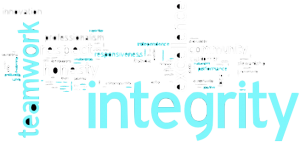The other day I had a conversation where someone asked me what my ‘leadership style’ was. For some reason I was taken a bit by surprise that I couldn’t answer the question with one crisp term: ‘I am a micromanager’ or ‘I lead by example’ or something like that. Nothing came to mind that would have answered the question with a simple word or a quick simple description. Rather, my leadership values started popping into my head. So I started explaining my five values (well, the ones I could easily remember anyways). The conversation went really well, but after coming home, it bugged me that I didn’t have this one sentence answer and I started looking around for how other people answer this question.
So here is what I learned and what I’d recommend you do with this question:
- Keep in mind that the question is a very personal one and the purpose is not to get a one word answer, but get you to outline a bit of who you are and how you show up as a leader. If you ever get asked this question in an interview, the interviewer will be able to tell whether you have some sort of a system and you have thought about leadership to start with. So, have a system you can talk about. Follow my ‘leadership value’ example from above if you want.
- Another way to explain and even explore your leadership style is to look back at examples and scenarios in your leadership career that showed your leadership style. To give you a personal example, say a project gets into some sort of trouble; maybe we are behind schedule or we loose a resource for a critical project. In those situations, I’ll try to jump in where appropriate. Highlight a situation where you were a really good manager and you made a difference. Explain how you were able to jump in and actually make a difference and rescue a project, for example.
- Some good answers, if they fit you, are some of the following terms. In an interview, don’t just throw these out, but elaborate, preferably with some good examples:
- “I lead by example”
- “I micromanage” – this is not always a bad thing – explain why you do and in what situations
- “hands-off” – this could be perceived as bad trait, but again, explain and you can turn this into something positive.
- “keeping an open dialog among everyone – no hierarchy”
- “delegating” – for me this is actually one of my leadership values: empowerment and responsibility
- Another way to talk about leadership styles is to look at autocratic versus democratic styles. In the autocratic setup, ‘the boss is bossy’. Often embodying micromanagement. In a democratic style, the boss includes the team in the decision making process. Generally, leaders don’t fall hard into one or the other camp, but are somewhere in the middle. It can still be a good way to explain how you approach your leadership.
- You can also think about your leadership style in the realm of the following personalities:
- Visionary – Follow me
- Operator – Sorry, our plan doesn’t specify that
- Compromiser – Let’s take a vote
- Drill Sergent – When I say jump …
- Cheer Leader – You guys rock
- Parrot – The person I talked to last …
- Windbag – blah blah blah
- Coach – I want you to imagine …
Again, you are most likely a combination of some of the above. And all of them have their pros and cons.
- If you are interviewing for a job, check if they have a special leadership style. GE, for example, has a leadership program which can help you orient yourself on how the company thinks about leadership. Knowing at least that they have a leadership program will earn you brownie points for the interview.
I hope these hints help you think about your own leadership style and the next time someone asks you, you have an exciting and meaningful conversation exploring your leadership journey and hopefully even expanding or refining your approaches.




